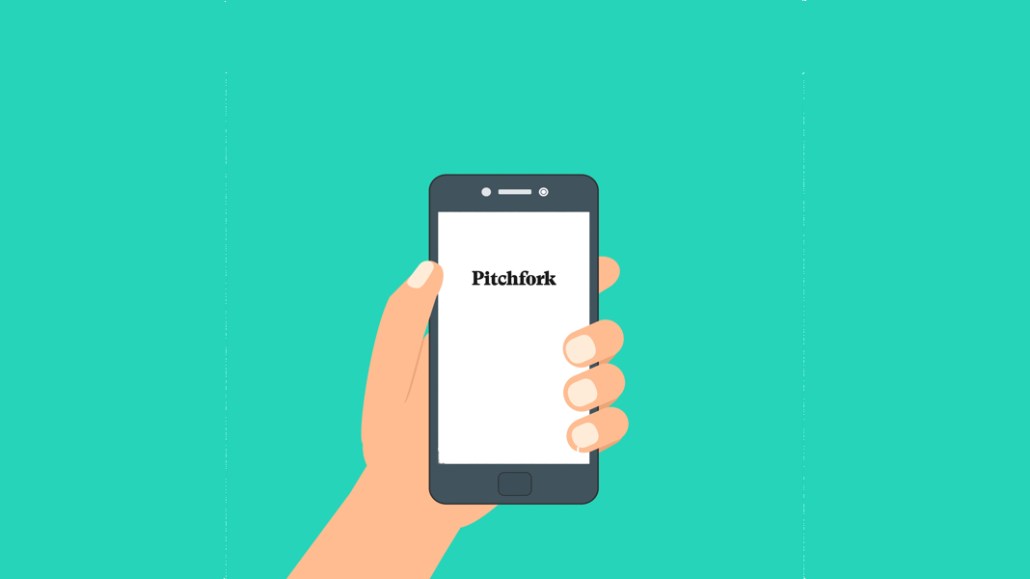Pitchfork bolsters live streaming output with ‘Listening Club’

With live music stuck at home, Pitchfork is pushing ahead
On Tuesday, the Condé Nast-owned publisher plans to announce the launch of “Listening Club,” a twice-monthly streaming video series featuring artists playing tracks from a just-released album and discussing them with listeners. Episodes will stream across Pitchfork’s website as well as its YouTube and Instagram accounts. The first installment, featuring Perfume Genius, will debut Friday, May 15.
Pitchfork canceled two live music festivals scheduled to take place in Chicago and Berlin later this year; it has not yet formally decided to cancel another festival, scheduled to take place in Paris in November.
Though Pitchfork has been streaming live performances for years, it decided to launch “Listening Club” after being forced to cancel the festivals, after deciding that smaller experiences might resonate more with people experiencing them at home.
“People are going to get tired of watching three hours of live music in a stream,” said Eric Gillin, the chief business officer of Condé Nast’s culture collection, which includes The New Yorker, Wired and Teen Vogue. “So it’s about filling the void with something that’s more exciting. It’s small, but I think ‘Listening Club’ is an important milestone in that process.”
With Americans hunkered down in their homes, live streamed concerts have exploded, as musicians look for ways to make up for lost touring income and as media companies and platforms look for ways to attract audiences. NPR launched an “at home” version of its Tiny Desk Concert franchise, while Twitch has begun hosting benefit concerts. Between March 25 and April 20, over 8,000 recording artists performed on at least one live stream, according to data compiled by live music listings platform BandsInTown.
Pitchfork had already begun capitalizing on the phenomenon by moving its franchise “Pitchfork Live” onto Instagram Live.
Pitchfork is offering brands a package of branded articles, social promotion before, during and after the performance and inclusion in the performance, depending on the circumstances. The price varies depending on the package’s content, though the prices begin $100,000, a source familiar with the packages said.
Conde’s other lifestyle sites have done their own digital adaptations. This week, Teen Vogue is hosting a “prom,” and Wired has begun streaming live conversations between its editor in chief, Nicholas Thompson, and business leaders such as Doordash CEO Tony Xu.
Those have attracted sponsors ranging from Salesforce to Axe Body Spray.
While live streamed musical performances have exploded over the past two months, the monetization prospects for media companies remain a bit uncertain.
At one end of the food chain, platforms have had success convening A-list stars for performances designed to raise money for charity, such as Bruce Springsteen’s Jersey for Jersey, which raised nearly $6 million for New Jersey’s pandemic relief fund.
But on the tiers beneath that, “there’s a lot of questions up in the air,” said Clayton Durant, the founder of CAD Management.
Durant said that he expects that musicians, platforms and media companies will have more sponsorship revenue to go after later this year, with no live sports on television. But for now, the deal-making remains laborious.
“It’s not this plug and play product,” Gillin said. “Every client is different, so their needs are different.”
More in Media

A timeline of the major deals between publishers and AI tech companies in 2025
Here’s a list of all the major deals signed between publishers and AI tech companies in 2025.

No playbook, just pressure: Publishers eye the rise of agentic browsers
For the bulk of publishers, Google is, as ever, the one to watch. It’s already got agentic features within its Chrome browser, but that’s the tip of the iceberg, some say.

The biggest SEO lessons in 2025 for publishers
KPIs are changing, more AI search data is becoming available, and publishers are looking beyond search to grow their audiences and revenue.








